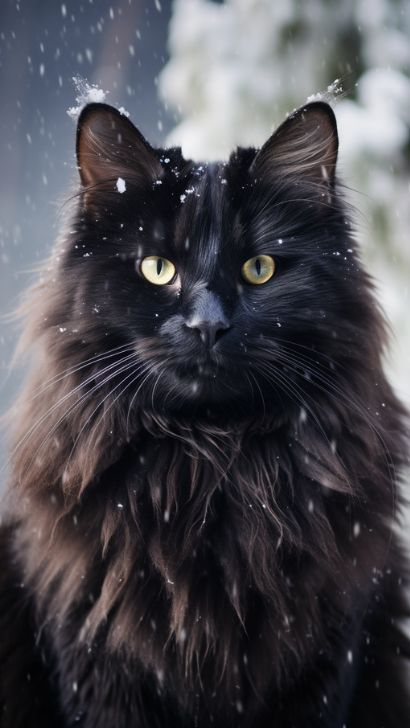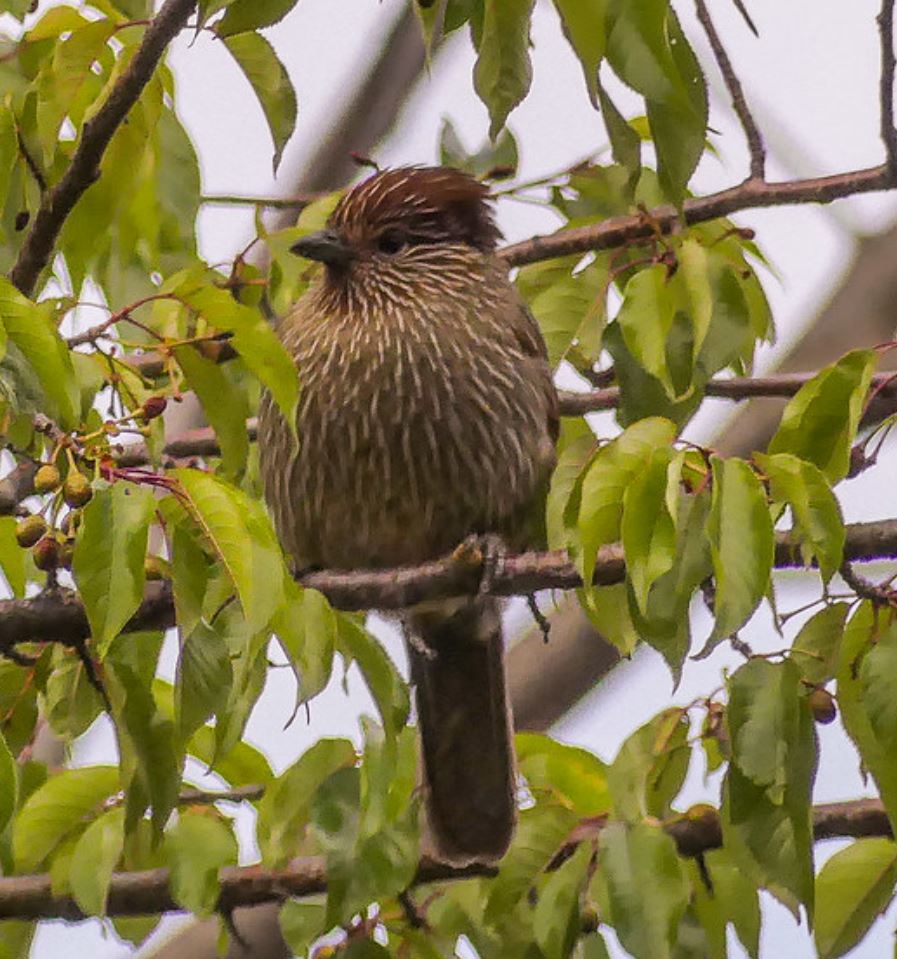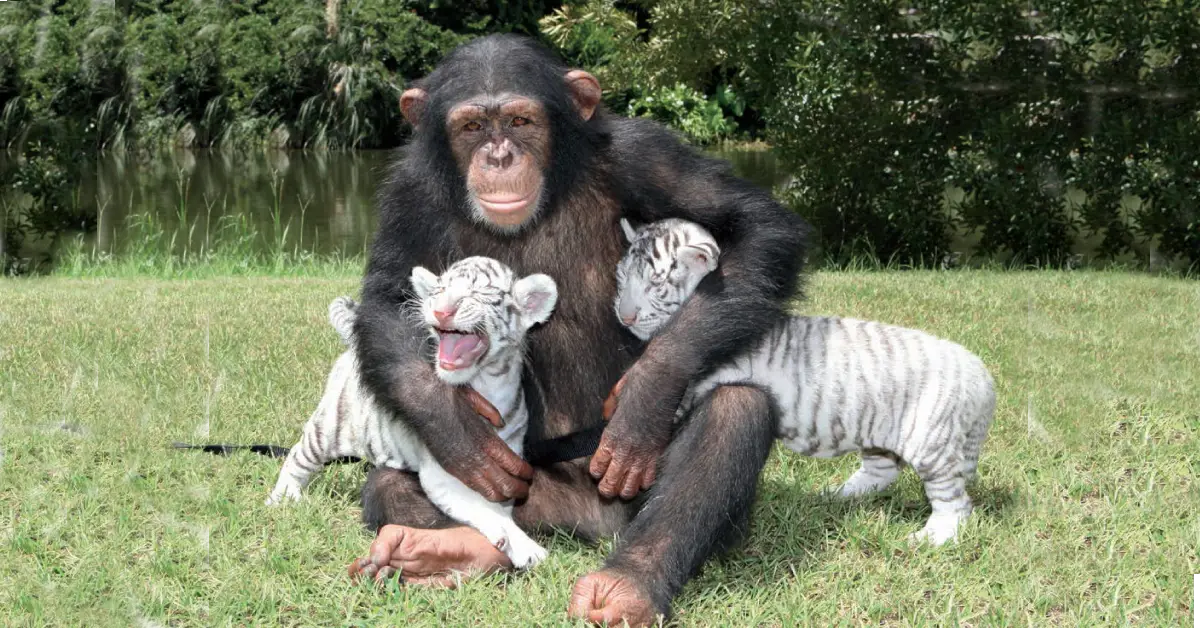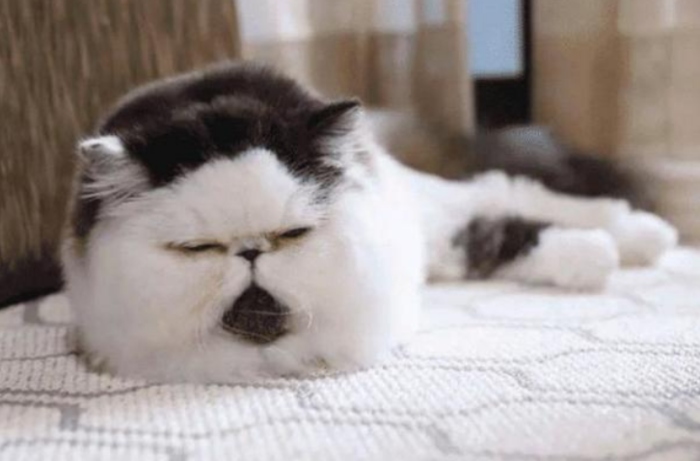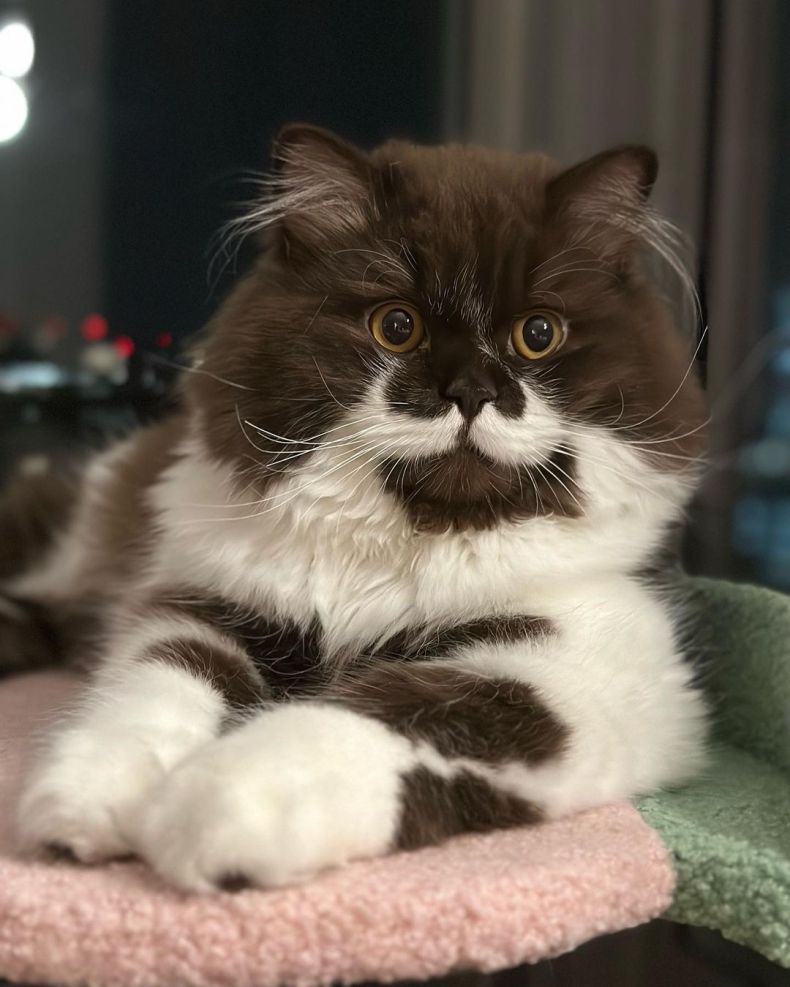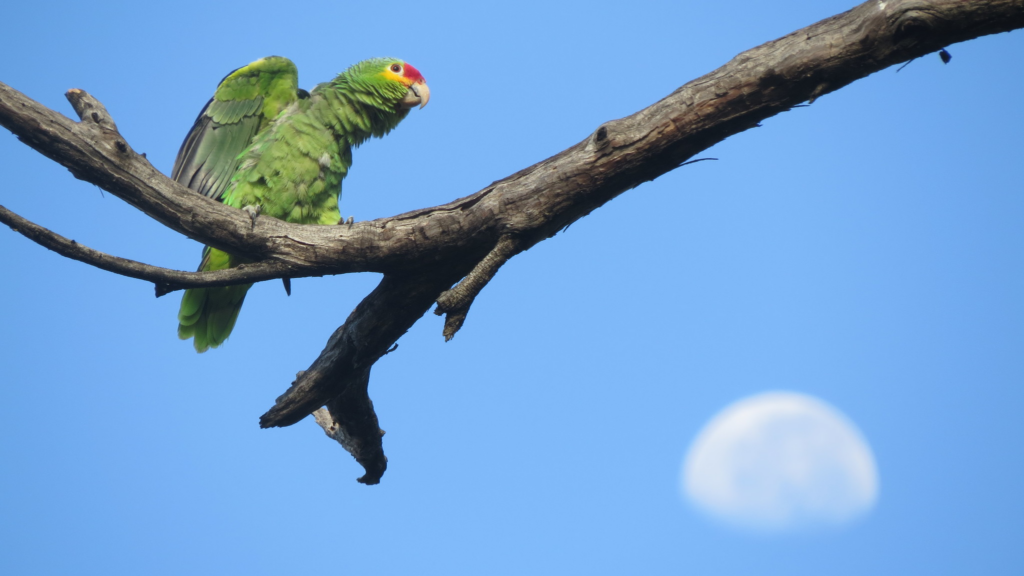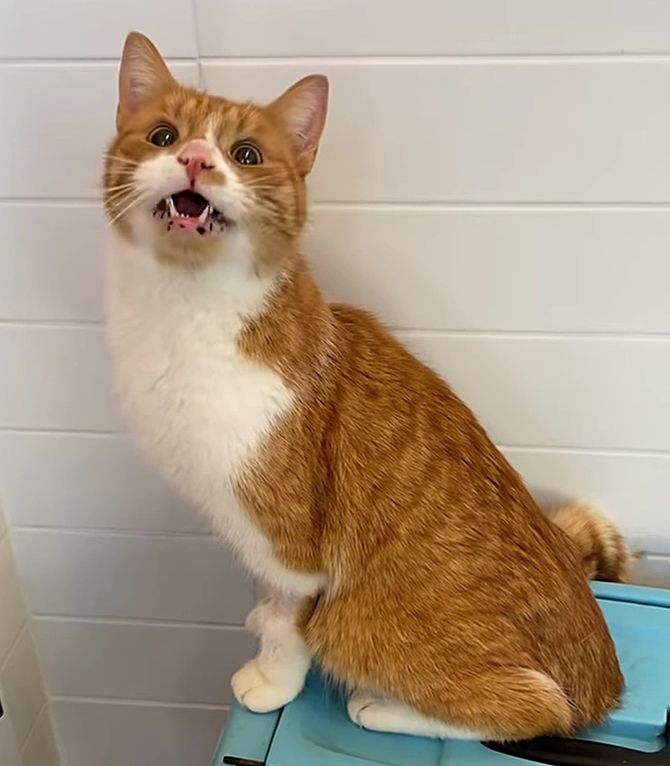Ever stumbled upon a cat so majestic it seems straight out of a fairy tale? Well, that’s the Black Norwegian Forest Catfor you! I’ve been captivated by this breed’s enchanting appearance and rich history, and I bet you will be too. In this article, we’ll dive deep into the characteristics, information, and fascinating facts about this regal feline.
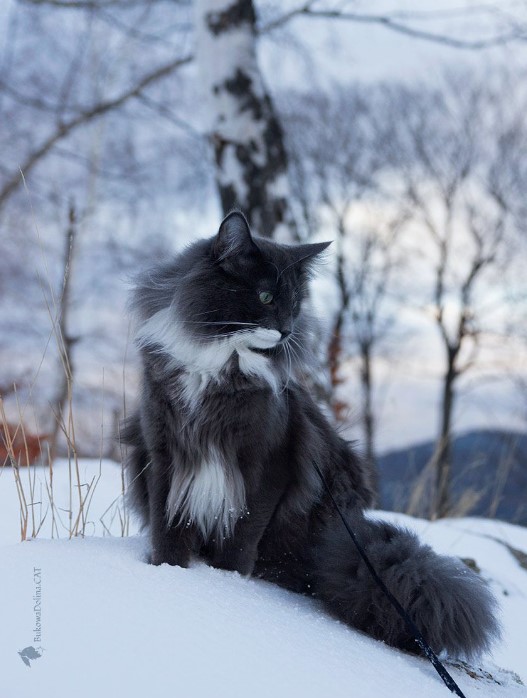
If you’re in a hurry or just looking for a quick overview, don’t fret! Just below, you’ll find a handy table summarizing the main characteristics of our furry friend. Let’s embark on this feline journey together!
CharacteristicBlack Norwegian Forest CatHistory OriginOriginated from the harsh Scandinavian forests, believed to be companions of Vikings. Recognized as a breed in the mid-20th century.AppearanceMajestic and regal with a dense double coat in black. Wide eyes, often yellow, with prominent ear tufts.SizeLarge breed, muscular and sturdy build.WeightMales: 13 to 18 pounds (5.9 to 8.2 kg). Females: 9 to 12 pounds (4.1 to 5.4 kg).Colors PatternsSolid black, black tabby, black smoke, and black tabby with white.HealthProne to hip dysplasia, hypertrophic cardiomyopathy, and glycogen storage disease type IV.DietRequires a nutritious and balanced diet, high in protein. Avoid toxic foods.CareRegular grooming, especially during shedding season. Regular vet check-ups.Shedding HypoallergenicSheds, especially in spring. Not hypoallergenic.Activity LevelsActive and playful. Can adapt to smaller spaces but need mental and physical stimulation.LifespanAverage lifespan of 14 to 16 years.PersonalityGentle, calm, independent yet affectionate. Not typically aggressive.With Other PetsGenerally good with other pets, including cats and dogs, with proper introductions.IntelligenceHighly intelligent, curious, and quick learners.Adoption PriceVaries, typically between $50 to $200, depending on the rescue organization and cat’s age and health.Table of contents: show
What is the origin and history of the Black Norwegian Forest cat?
The Norwegian Forest cat, affectionately known as the Wegie, has a history that’s as enchanting as its appearance. This breed of cat is believed to have its roots in the harsh Scandinavian forests, dating back several centuries.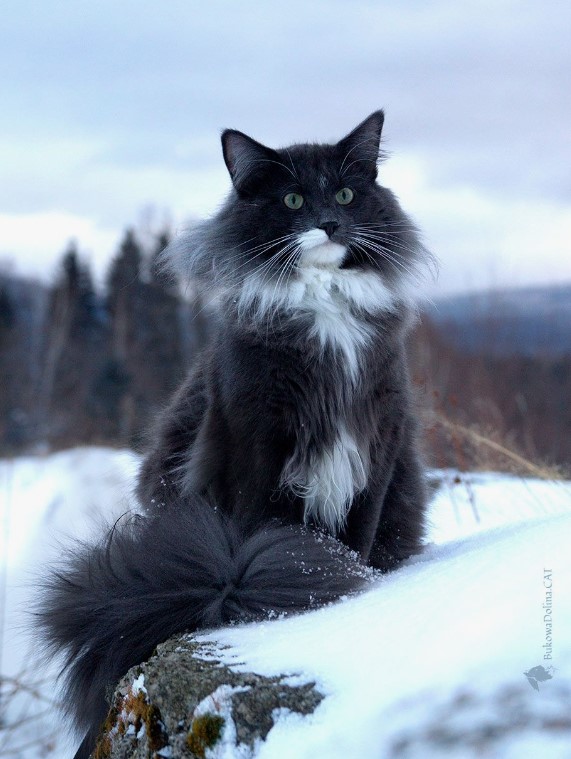
Legends say that these cats were the companions of Vikings, traveling with them on their long voyages and serving as excellent mousers on their ships. Over time, the Norwegian Forest cat adapted to the cold and rugged environment of Scandinavia, developing its thick and water-resistant coat.
The black Norwegian Forest cat, with its striking black coat, is just one of the many beautiful coat colors of this breed. Some historians even believe that the Vikings might have cross-bred their cats with long-haired cats from other regions, leading to the luxurious coat of the Norwegian Forest cat we see today.
However, despite its ancient lineage, the Norwegian Forest cat was only officially recognized as a breed in the mid-20th century.
The Cat Fanciers Association and the International Cat Association both played roles in establishing the breed standard for these cats. Interestingly, during World War II, the breed almost faced extinction. But thanks to the efforts of dedicated Norwegian Forest cat breeders, the breed was revived.
If you ever come across photos and images of a Norwegian Forest kitten from the past, you’ll notice that even back then, they had the same majestic aura that they carry today.
What is the appearance of the Black Norwegian Forest cat?
When you set your eyes on a Black Norwegian Forest cat, you’re immediately captivated by its regal appearance. The black background of its coat gives it a mysterious and elegant look.
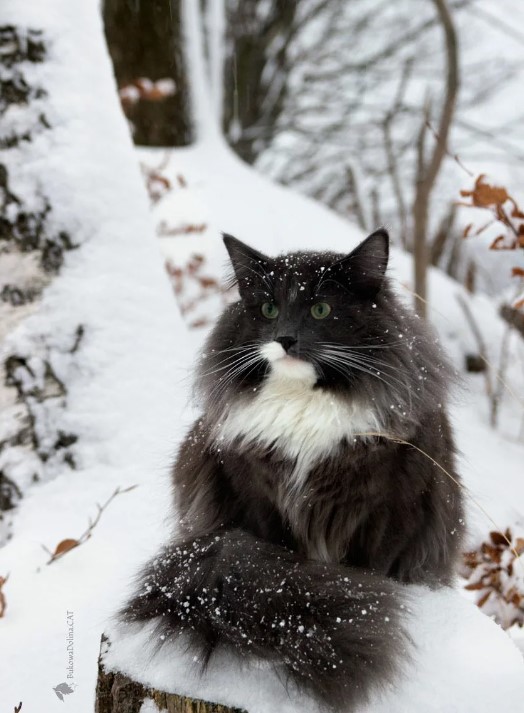
This breed’s coat can come in various patterns, including the black tabby Norwegian Forest cat and the black smoke Norwegian Forest cat. The black tabby with white is especially enchanting, with its contrasting colors and patterns.
One of the most distinctive features of the Norwegian Forest cat’s appearance is its double coat. The dense undercoat provides insulation, while the long, glossy outer coat is water-resistant, a testament to its Scandinavian origins.
A close-up of a beautiful Norwegian Forest cat will reveal more of its unique features. Their eyes, often a deep shade of yellow, are large and expressive, giving them a wise and knowing look.
The cat’s fur around the neck forms a ruff, similar to a lion’s mane, adding to their majestic appearance. Their ears are wide at the base with lynx tips and tufts, reminiscent of their wild ancestors.
The whisker pads are prominent, and their strong, muscular body is a testament to their history as skilled hunters in the Norwegian forests. Whether it’s a black coat or a tortoiseshell Norwegian Forest, the breed’s appearance is always a blend of elegance and wilderness.
What is the size of the Black Norwegian Forest cat?
The Norwegian Forest cat, whether male or female, is a large breed, often compared to the Maine Coon cat in terms of size. Norwegian Forest cat males typically are larger than their female counterparts.
A male stands at about 11 to 13 inches (28 to 33 cm) tall, while females are slightly shorter, measuring around 9 to 11 inches (23 to 28 cm) in height. Their length, from nose to tail, can range from 12 to 18 inches (30.5 to 45.7 cm) for both genders.
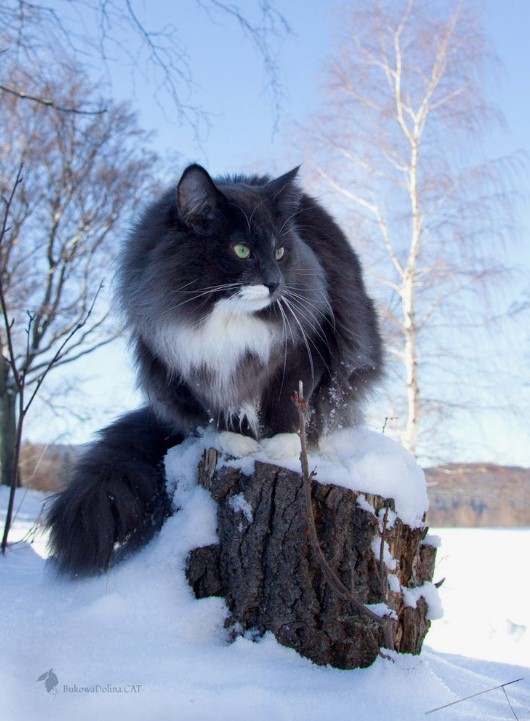
When considering adopting or purchasing a Norwegian Forest cat, it’s essential to be aware of their size. These cats tend to have a sturdy build, with strong bones and a muscular physique. Their size and strength are part of what makes them such skilled climbers and hunters. If you’re comparing them to other breeds, you’ll find that they’re larger than the average domestic cat but slightly smaller than the Maine Coon cat.
When looking at Norwegian Forest cat kittens, it’s crucial to remember that these cats grow at a slower rate than some other breeds. They might not reach their full size until they are around 4 years old. So, if you’re adopting a kitten, ensure you have enough space for them to grow and play comfortably.
What is the weight of the Black Norwegian Forest cat?
The Black Norwegian Forest cat, a majestic member of the Norwegian cat family, is a sizable and robust feline. Typically, Norwegian Forest cat males are heftier than their female counterparts.
A male can weigh anywhere from 13 to 18 pounds (5.9 to 8.2 kg). On the other hand, females, while still substantial, are a tad lighter, weighing in between 9 to 12 pounds (4.1 to 5.4 kg).
If you’re considering adopting or buying one of these felines, it’s essential to be aware of their weight. Their size is a testament to their strong genetic lineage, adapted to the harsh climates of Scandinavia.
However, as a potential cat owner, you should also be mindful that like any other breed, individual weights can vary based on diet, exercise, and overall health. Regular check-ups with a DVM (Doctor of Veterinary Medicine) can ensure that your Norwegian Forest cat maintains a healthy weight throughout its lifespan.
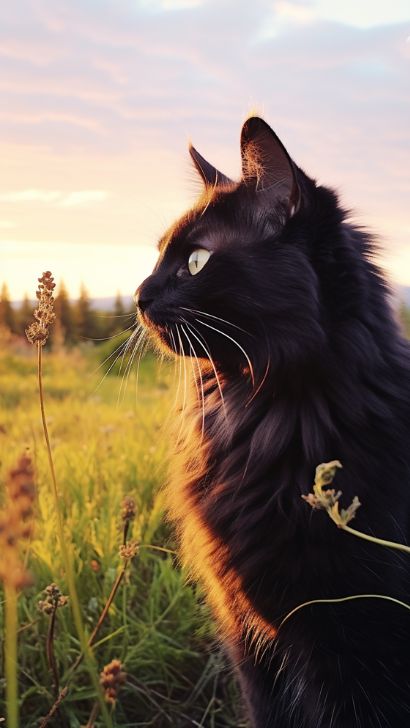
What are the most common patterns of the Black Norwegian Forest cat?
The Black Norwegian Forest cat is not just a monochrome beauty; it comes in a variety of patterns and shades. While the solid black coat is indeed captivating, there are other popular patterns within the black spectrum of this breed. For instance, the black tabby Norwegian Forest cat is a sight to behold with its intricate swirls and stripes set against a dark backdrop.
Another enchanting variant is the black smoke Norwegian Forest cat, where the fur appears almost mystical with its smoky undertones. And of course, the black tabby with white markings is a delightful combination, adding a touch of contrast to the cat’s overall appearance.
It’s worth noting that while the focus here is on the black variants, the Norwegian Forest breed as a whole boasts a wide range of colors and patterns, including the white Norwegian and many others. Each pattern and color brings out a unique aspect of the cat’s personality and charm.
So, whether you’re looking for a cat with a solid black coat or one with intricate patterns, the Norwegian Forest cat offers a plethora of beautiful options.
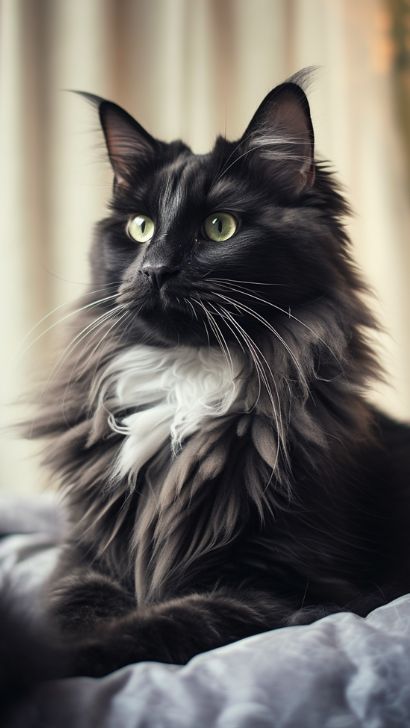
What are the common health issues and problems of the Black Norwegian Forest cat kittens?
Like all breeds, the Black Norwegian Forest cat is prone to specific health issues. One of the primary concerns for this breed is hip dysplasia, a condition where the hip joint doesn’t fit into the hip socket properly. This can lead to arthritis over time.
Another concern is cardiomyopathy, specifically hypertrophic cardiomyopathy, which is a heart disease that can be quite severe if not diagnosed early. Additionally, glycogen storage disease type IV, a rare metabolic disorder, has been identified in some Norwegian Forest cats. It’s crucial to ensure that breeders have their breeding cats tested and available for GSD IV to prevent the disease’s spread.
What is the best diet for the Black Norwegian Forest cat and what should be avoided?
The Black Norwegian Forest cat, with its robust build and active nature, requires a nutritious and balanced diet. High-quality commercial cat food, rich in protein, is often a good choice. Given their larger size and active nature, these cats might require more calories than some other breeds.
However, it’s essential to monitor their weight and adjust their food intake accordingly. Including wet food in their diet can help ensure they get enough hydration, as these cats sometimes don’t drink enough water.
While it might be tempting to treat your Norwegian Forest cat with table scraps, it’s best to avoid foods that are toxic to cats. These include chocolate, onions, garlic, caffeine, alcohol, and certain artificial sweeteners like xylitol.
Always consult with your vet before introducing any new food or supplement into your cat’s diet. Remember, a well-fed Norwegian Forest cat is not just about quantity but quality. Ensuring they get the right nutrients will keep their coat shiny, their eyes bright, and their energy levels high.
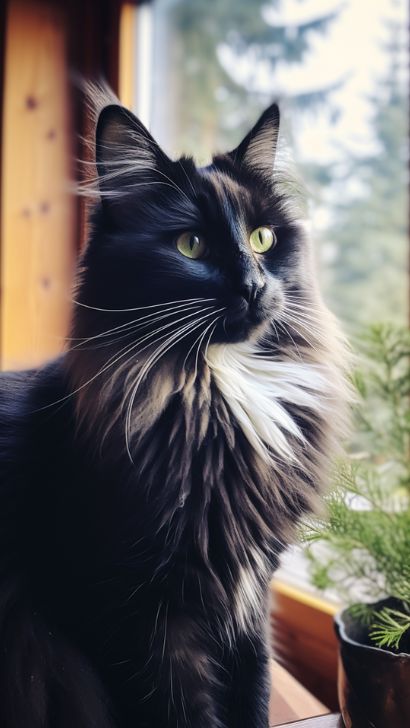
Is the Black Norwegian Forest cat high maintenance? (Are these cats good for first-time owners?)
The Black Norwegian Forest cat, with its luxurious double coat, might seem like a high-maintenance breed at first glance. Regular grooming is indeed essential to prevent their fur from matting, especially during the springtime when they shed their winter coat.
A weekly brush should suffice for most of the year, but during shedding season, more frequent grooming might be necessary to prevent tangles and mats. Those beautiful ear tufts and the fur between their front legs can be areas where knots develop, so pay special attention there.
However, in terms of temperament, these felines are loving and affectionate, making them great companions. They are independent yet sociable, and while they enjoy climbing and exploring, they’re equally content sitting by your side.
For first-time cat owners, the Norwegian Forest cat can be a joy to have. Their gentle nature and adaptability make them perfect pets for families, singles, and seniors alike. As long as you’re prepared for their grooming needs and provide them with the love and care they deserve, they’ll be a cherished member of your household.
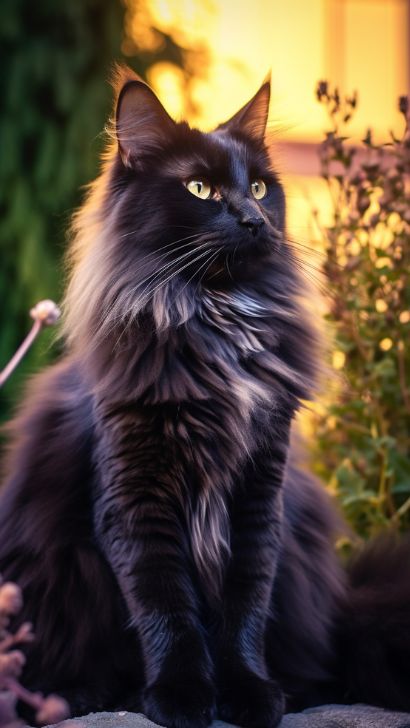
Is the Black Norwegian Forest cat breed shedding hypoallergenic?
The Black Norwegian Forest cat, with its luxurious dense coat, is not hypoallergenic. In fact, no cat breed is truly hypoallergenic, but some breeds produce fewer allergens than others. The Norwegian Forest cat has a thick double coat that sheds, especially during the spring when they transition from their winter to summer fur.
This shedding can release more of the protein (Fel d 1) responsible for causing allergic reactions in sensitive individuals. Regular grooming can help reduce the amount of loose fur and dander in your home, but if you’re allergic, it’s essential to spend time around these cats before deciding to adopt one.
If you or someone in your household has cat allergies, it’s crucial to consider this before bringing a Norwegian Forest cat into your home. While regular grooming and cleaning can reduce allergens, it might not eliminate the problem entirely.
Some individuals find that they can tolerate certain cats better than others, even within the same breed. So, it’s always a good idea to spend time with a black cat or any Norwegian Forest cat to gauge your reaction before making a long-term commitment.
What is the activity level of the Norwegian Forest cat black?
The Black Norwegian Forest cat is an active and playful breed. These cats, often referred to as Wegies, have a strong hunting instinct and love to climb and explore. If you have a house cat that’s a Norwegian Forest, providing them with cat trees and interactive toys can help channel their energy. While they’re active, they’re also quite adaptable.
This means that they can adjust to living in smaller spaces like apartments, as long as they have enough stimulation. However, if you have a balcony or an outdoor space, ensure it’s cat-proof to prevent any adventurous escapes.
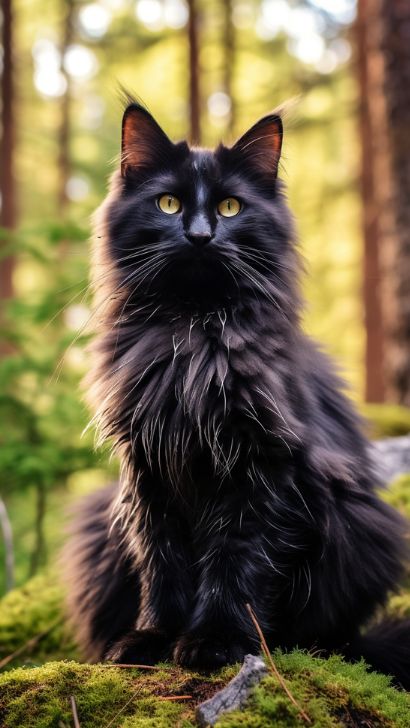
Leaving a Norwegian Forest cat alone for extended periods can lead to boredom, which might result in destructive behavior. If you’re someone who’s away from home often, consider providing plenty of toys, puzzle feeders, and maybe even a feline companion to keep your Norwegian Forest cat company.
While they value their independence, they also thrive on interaction and engagement. So, even in smaller living spaces, as long as you provide enough stimulation, they’ll be content and happy.
What is the average lifespan of the Black Norwegian Forest cat?
The Black Norwegian Forest cat, like its colorful counterparts, boasts an average lifespan of 14 to 16 years. With proper care, regular veterinary check-ups, and a balanced diet, some even live beyond this range.
Their robust Scandinavian lineage contributes to their overall good health and longevity. However, as with any breed, they can be prone to specific health issues, which, if addressed early, can ensure a long and healthy life.
As a potential or current Norwegian Forest cat owner, it’s essential to be proactive about their health. Regular vet visits, a nutritious diet, and an active lifestyle can contribute significantly to their well-being.
Also, being aware of the common health issues in the breed and monitoring for any signs or symptoms can ensure that any potential problems are addressed promptly. With love, care, and attention, your Norwegian Forest cat can be a cherished companion for many years.
